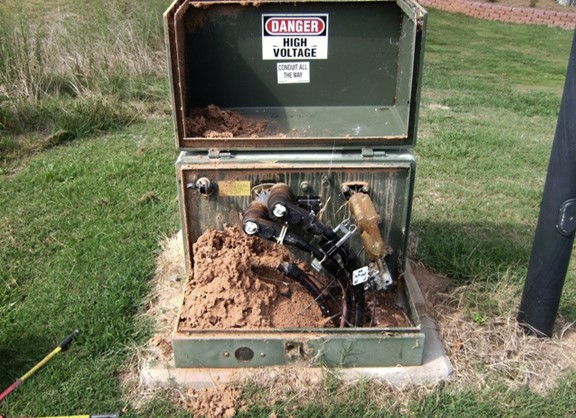An In-Depth Examination of Transformer Repair Timelines
Electrical equipment, like any other machine, is susceptible to breakdowns and requires timely maintenance to ensure peak performance and prevent catastrophic failures. When it comes to blown transformers, the extent of damage, access to repair facilities, and availability of skilled technicians play decisive roles in determining the repair timeline. Here, we delve into the various factors that influence repair intervals for blown transformers.

Image: corefficientsrl.com
When a transformer experiences an internal fault, resulting in electrical arcing, thermal stress, and ultimately leading to severe damage, it is referred to as a blown transformer. The repair process starts with isolating the faulty transformer from the power grid to prevent further damage and safety hazards. Afterward, the transformer is carefully transported to a repair facility equipped with the tools and expertise necessary for transformer overhauls.
Factors Affecting Repair Timelines
1. Severity of Damage:
The extent of damage to the transformer determines the complexity and duration of repairs. Minor faults may involve replacing or rewinding coils, which can be completed in a few days or weeks. However, major damage, such as core failures, may require significant time for re-lamination, winding, and drying.
2. Availability of Repair Facilities:
A critical factor influencing repair timelines is the proximity and availability of qualified repair facilities. If a facility specializing in transformer repairs is situated nearby, the turnaround time can be shorter compared to having to transport the transformer to a distant location.
3. Availability of Skilled Technicians:
The availability of experienced technicians with specialized knowledge in transformer repairs plays a significant role in the overall repair process. A shortage of skilled technicians can result in extended waiting periods for repair services.
4. Accessibility to Spare Parts:
The availability of spare parts can significantly impact repair timelines. In situations where custom-made coils or parts are required, delays may occur as manufacturers fulfill production orders.
5. Concurrent Repairs:
The repair facility’s workload is another important aspect. If multiple transformers or other electrical equipment are being repaired simultaneously, it can prolong the repair timeline for a particular transformer.
6. External Factors:
Unforeseen circumstances, such as adverse weather conditions, transportation delays, or unforeseen technical difficulties, can also contribute to extended repair times.
Average Repair Timelines
While repair timeframes can vary greatly depending on the aforementioned factors, general estimates can be provided. For minor transformer faults, repairs may typically take a few days to a few weeks. However, for more severe damage, repair timelines can extend from several weeks to even months in some instances.
Minimizing Repair Timelines
1. Preventive Maintenance:
Regular inspections, testing, and oil analysis can help identify potential issues early on, allowing for prompt repairs and reducing the risk of catastrophic failures.
2. Establishing Relationships with Repair Facilities:
Partnering with reputable repair facilities and building a strong rapport can expedite the repair process by ensuring priority service when necessary.
3. Maintaining Spare Parts Inventory:
Stocking essential spare parts can minimize downtime by eliminating delays caused by waiting for parts to be manufactured or sourced.
4. Redundancy Planning:
Having backup transformers or load-sharing arrangements can ensure continuity of service during repair periods, minimizing the impact on critical operations.

Image: www.wthr.com
How Long To Fix A Blown Transformer
Conclusion
The repair timeline for a blown transformer hinges on various factors, including the severity of damage, proximity and availability of repair facilities, skilled personnel, and spare parts inventory. By understanding these factors and implementing proactive measures like preventive maintenance, businesses can effectively manage transformer failures and minimize repair downtime. Remember, a well-maintained transformer is a reliable and efficient one, ensuring uninterrupted power supply and peace of mind for businesses and organizations.